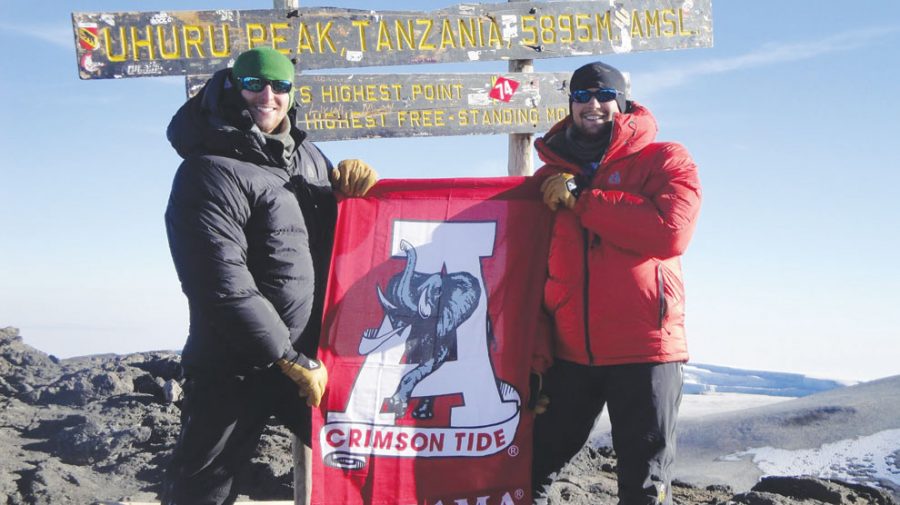Austin Chunn was worried.
As a long-time practitioner of martial arts, Austin has made a point of keeping his body in shape, but the fight he anticipated in the coming months would not involve the familiar foray of fists and feet.
In July of the previous summer, Austin, a junior majoring in finance, trekked with his older brother Matt to the summit of the tallest freestanding mountain in the world.
Located in Tanzania, Africa, Mount Kilimanjaro stands at 19,298 feet above sea level.
“It’s the highest vertical mountain in the world,” Matt said. “From Everest Base Camp, you only go up about 6 to 8,000 feet total.”
Austin said the ascent to the summit of Uhuru Peak, otherwise known as the ‘Roof of Africa,’ challenged his psychological and physical reserves from day one.
“I came into it kind of tentatively,” he said. “I did a study abroad in Italy and I was worried if I would be physically ready…and that first day, it was like a kick in the face. You start almost at zero [altitude] and it’s like step after step after step.”
Austin said climbing the mountain demanded patience and vigor.
His brother, Matt, said the altitude of the trek can induce headaches, dizziness, nausea, and pulmonary edema, or fluid accumulation in the lungs, because of the low levels of oxygen in the atmosphere.
“They bill it as a walking mountain, but it’s a lot harder than what they tell you,” Matt said.
Matt said oxygen deprivation led to a number of complications during the climb.
“People that snore or have symptoms of sleep apnea will naturally develop sleep apnea,” he said. “Sometimes, you wake up gasping for air.”
Austin said the higher the altitude, the less sleep his body could find because of the shortage of oxygen for his brain to use.
He said he and his brother started to use Diamox, a medication that enhances the body’s intake of oxygen, after the second day of the climb. What started as a regimen of half a tablet morning and night became an ingestion of full pills when the altitude choked the air of oxygen.
“It definitely helps you sleep better,” Austin said.
Matt said the bite of the cold climate did not overshadow the power of the visible peak to lure the trekkers onward.
“By the second night, it was freezing,” Matt said. “The weather started getting colder at night, but from the very beginning you can see the snow peak [from the summit]. You’re scaling different pieces of the mountain to see it.”
Matt said the mountain’s summit baffled him.
“It’s almost like climbing in a gravel pit,” he said. “It’s really weird because there’s ash, rock and magma next to all of this snow and glacier on the mountain. I definitely didn’t expect that.”
He said the summit was the most difficult to ascend.
“You take 40 steps and you want just to fall over and wheeze for a minute,” Matt said.
Austin said the extremity of the cold and the rigors of the climb were insignificant in comparison to the sight atop the zenith of Kilimanjaro.
“Right as we got to the top, the sun peaked over the top of the mountain,” he said. “It was worth every second of the climb. It’s very tough to put into words.”
Austin said he and his brother stayed on Uhuru Peak for over an hour, instead of leaving after the recommended handful of minutes.
“We just felt great,” he said. “You get kind of a high feeling up there.”









